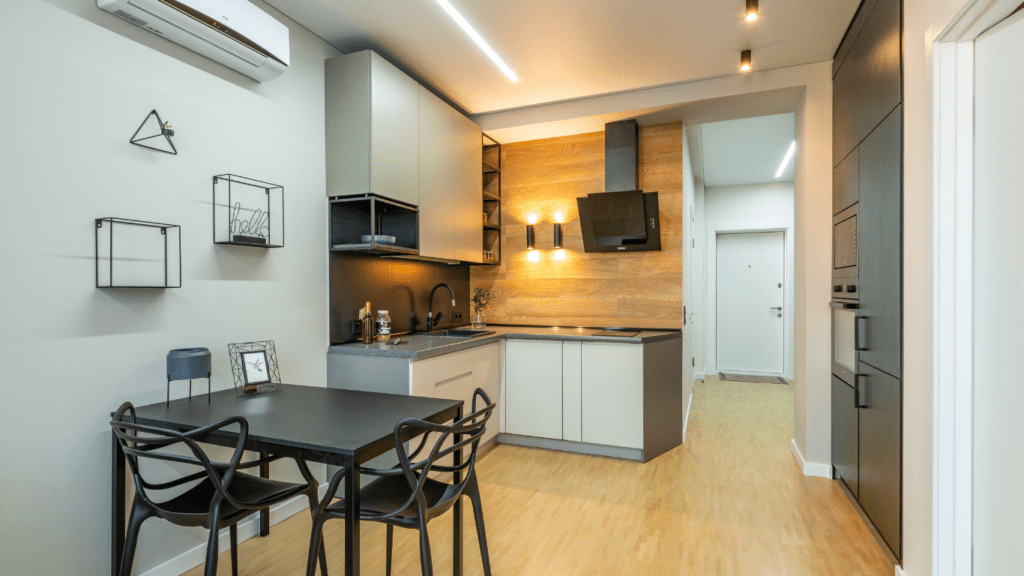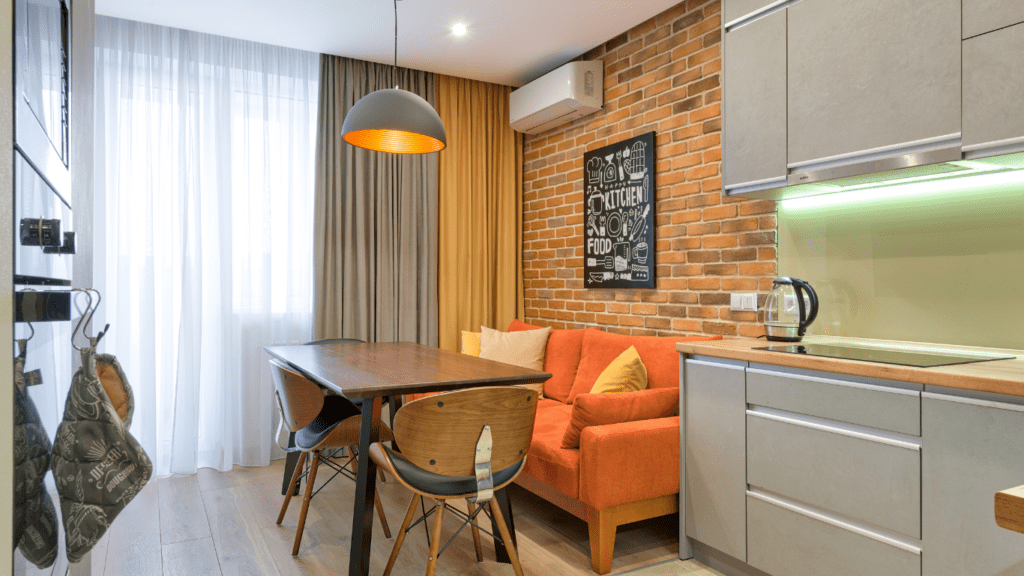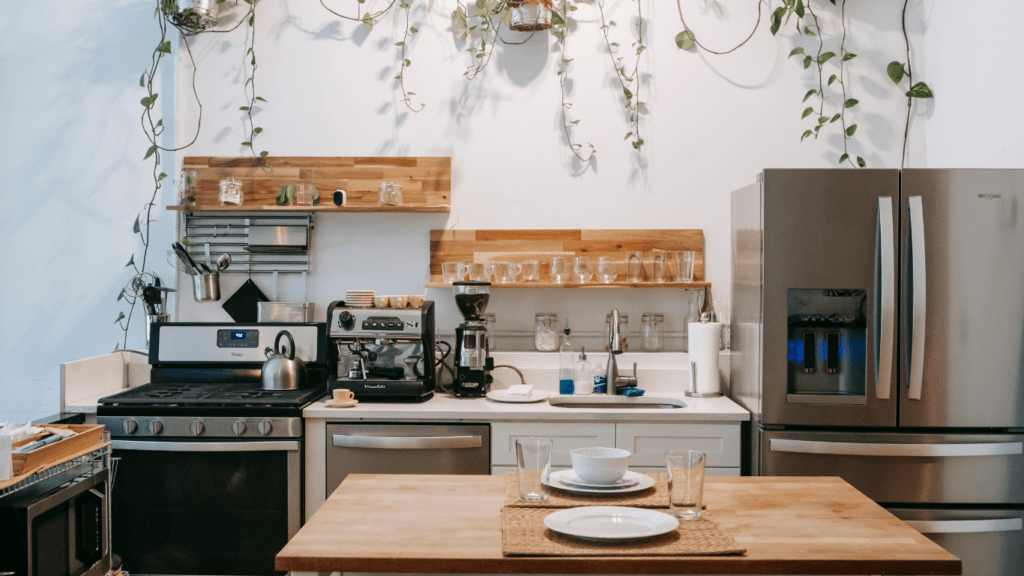Understanding Spatial Constraints
Small apartments often come with unique spatial constraints that challenge effective furniture placement. It’s crucial to identify and utilize every square inch of available space. Recognize that multi-functional furniture, such as sofa beds or extendable dining tables, can serve multiple roles and minimize clutter.
Avoid placing large furniture pieces near entryways, as this can obstruct passage and create a cramped environment. Instead, opt for strategically placing larger items against walls to free up central areas, allowing easier movement.
Take advantage of vertical space by using tall shelving units and wall-mounted storage options. This not only saves floor space but also draws the eyes upward, making rooms feel taller and less confined.
Consider the flow of natural light. Large and bulky furniture should never block windows, as natural light maximizes the sense of space. Transparent or light-colored furniture can also help reflect light and open up the room further.
Anchor your rooms with area rugs to define spaces without physical barriers. In open-concept designs, rugs clearly demarcate different functional zones, such as living and dining areas. This helps maintain a sense of order and spaciousness.
Use mirrors to create the illusion of more space. Placing mirrors opposite windows or light sources can reflect light and give the perception of a larger, brighter room.
Key Principles of Furniture Placement
Successfully arranging furniture in a small apartment requires adhering to several key principles. Focus on making the space functional while maximizing every available inch.
Prioritize Functionality
Functionality tops the list when placing furniture. Choose items that serve multiple purposes. For example, a sofa bed or a coffee table with storage helps conserve space. Avoid bulky furniture with limited use. Think about daily activities and ensure easy access to frequently used areas. Ensure pathways remain clear; for instance, the route from the kitchen to the dining area should be unobstructed.
Maximize Vertical Space
Utilizing vertical space optimizes small living areas. Install shelves high on the walls to free up floor space. Use tall bookcases to store items without occupying much ground area. Wall-mounted cabinets, for example, can replace floor cabinets in the kitchen. Opt for furniture that extends upward, like vertical dressers in bedrooms, to prevent clutter. Additionally, hanging planters or artwork can add a decorative touch without crowding the room.
Do’s of Furniture Placement
Strategic furniture placement can make a small apartment feel spacious and functional. Use these tips to create an inviting and efficient living space.
Use Multi-functional Furniture

Multi-functional furniture can save precious square footage in a small apartment. Convertible sofa beds, extendable dining tables, and storage ottomans provide practical solutions without adding bulk. A coffee table with built-in storage can keep clutter at bay. Choosing items that serve multiple purposes maximizes usability in minimal space.
Create Defined Zones
Defined zones enhance the organization and functionality of small apartments. Use area rugs to delineate spaces such as:
- living area
- dining corner
Room dividers, open shelving, and curtains can add separation without walls, making each zone feel distinct. Clearly defined areas avoid a cluttered appearance and improve room functionality.
Don’ts of Furniture Placement
Strategic planning helps optimize small apartment spaces, avoiding common pitfalls ensures comfort and functionality.
Avoid Oversized Furniture
- Large pieces overwhelm small spaces.
- Opting for compact furniture helps maintain balance and flow. For example, use a loveseat instead of a full-sized sofa or a small dining table rather than a large one.
- Proportional furniture fits better, ensuring the room doesn’t feel cramped.
- Avoid placing bulky items like king-sized beds or oversized cabinets that consume valuable space and restrict movement.
Don’t Block Pathways
- Clear pathways are essential for everyday living.
- Blocking routes with furniture disrupts flow and makes navigation difficult.
- Arrange furniture to allow easy access to all areas. For instance, don’t place a sofa or table in a way that obstructs entry to the kitchen or bathroom.
- Keeping entryways and walkways free from obstructions enhances mobility and contributes to a more organized and airy environment.
- Avoid positioning large items where foot traffic is high, like hallways and doors.
Real-life Examples
Here, I’ll share real-life examples to illustrate effective furniture placement in small apartments.
Studio Apartment Layouts
In studio apartments, maximizing open space is key. I once arranged a studio by placing a sofa bed against the far wall, creating a living and sleeping area without using much space. A fold-out dining table, positioned opposite the sofa, served as both a dining area and extra workspace. I used vertical storage solutions, like tall bookshelves, along the walls to keep the floor clear. In another instance, I separated the sleeping area with a curtain, hung from a ceiling track, preserving privacy without compromising space.
One-bedroom Apartment Layouts
In one-bedroom apartments, defining zones enhances functionality. For an example, I arranged a compact sectional in the living room corner, creating a cozy seating area separate from the rest of the apartment. The dining table, placed near the kitchen, doubled as a prep space when not in use. Another strategy involved placing a storage ottoman at the foot of the bed, adding seating and hidden storage. In these setups, I utilized vertical space with high shelves above the bed and sofa to store books and decorative items, keeping the floor clear.



 Harry Marriott – Lead Interior Stylist
Harry Marriott is Castle Shelf House’s Lead Interior Stylist, known for his keen eye for detail and expertise in modern and classic home designs. With a background in interior architecture, Harry brings innovative styling solutions to the forefront, ensuring that each home reflects a unique personality. His approach to furniture placement and design trends helps clients create harmonious living spaces that combine aesthetics with functionality.
Harry Marriott – Lead Interior Stylist
Harry Marriott is Castle Shelf House’s Lead Interior Stylist, known for his keen eye for detail and expertise in modern and classic home designs. With a background in interior architecture, Harry brings innovative styling solutions to the forefront, ensuring that each home reflects a unique personality. His approach to furniture placement and design trends helps clients create harmonious living spaces that combine aesthetics with functionality.
